Historical parallels
Going into the 2016 match, Carlsen was considered the clear favourite, but he struggled to take the lead despite several chances in the early games of the match. Karjakin put up a staunch defence under pressure, saving bad positions repeatedly. What can we learn from the 2016 match that may be relevant also for the Carlsen-Caruana match currently underway? Why is it so difficult to close out better positions?
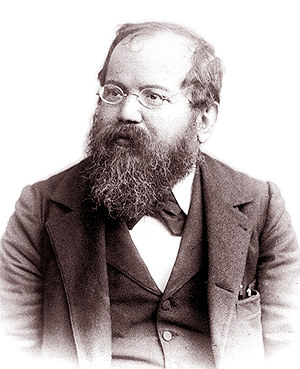 To understand these patterns, it is necessary to go back in time to the first World Champions in chess history, Wilhelm Steinitz and Emanuel Lasker. Steinitz revolutionised chess and is deservedly considered the father of modern positional chess. Breaking with the accepted perception of the day, which focused on attacks and beautiful combinations, it was the first World Champion's great insight that chess is an equilibrium game. To win a chess game, the equilibrium must be significantly disturbed. At the core, chess is a drawn game.
To understand these patterns, it is necessary to go back in time to the first World Champions in chess history, Wilhelm Steinitz and Emanuel Lasker. Steinitz revolutionised chess and is deservedly considered the father of modern positional chess. Breaking with the accepted perception of the day, which focused on attacks and beautiful combinations, it was the first World Champion's great insight that chess is an equilibrium game. To win a chess game, the equilibrium must be significantly disturbed. At the core, chess is a drawn game.
The implication of this insight is that chess games cannot be won without mistakes by the opponent. No matter how accurately or brilliantly you play, you are not going to win if your opponent does not make mistakes that significant disturb the equilibrium.
Steinitz understood this very well and advocated the collection of minor advantages through profound positional play. This is, in essence, another way of saying that your opponent has to make mistakes for you to win. The root of any acquired advantage is a mistake of some magnitude by the opponent, even minor ones. For example, let’s assume you have a positional advantage such as control of a strong square for your knight. For this to happen, your opponent must at some point have misevaluated the positional value of this square.
Few players understood — or accepted — this in Steinitz’ time. One of the early exceptions was the second World Champion, Emanuel Lasker, who not only understood but expanded Steinitz’ original theory and, importantly, applied it better over the board than its creator. This allowed Lasker to take the World Championship from Steinitz in 1894 and hold on to the title for the following 27 years.
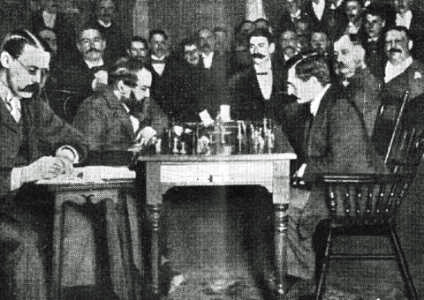
Steinitz vs Lasker, 1894 | Public domain via Wikimedia Commons
Fast forward to the present day. Even with powerful analysis engines, databases with millions of games and a hundred years of experience in chess, the basic insights from Steinitz and Lasker still apply: chess games can only be won if mistakes cause the equilibrium to be significantly broken.
As Carlsen experienced vs Karjakin in 2016, it is not easy to break through the defences of a staunchly defending opponent. They may bend, but not break.
Typically, a single mistake is not enough to win — or lose — a game, unless it is a major blunder. The drawing margin is wide in chess, which is why we see so many draws at the highest level. You have to get your advantage beyond a pretty significant threshold — modern analysis engines tell us something like 1.50-1.60 pawns — to win. Conversely, once you have built an advantage beyond the threshold — what we typically refer to as a decisive advantage — there is theoretically nothing your opponent can do to save the game, other than hope that you, in turn, make a mistake that brings the game inside the drawing margin again. The games we have seen in the Carlsen-Caruana match illustrate these patterns. For instance, in Game 1 Carlsen did, in fact, hold a decisive advantage at some point and Caruana had to rely on mistakes by the World Champion to save the game. In Game 2, Caruana, in turn, held the advantage, but it was never beyond the threshold, and so Carlsen had few problems holding the draw.
For the opponent to break, and your good position turning into a winning one, typically requires additional mistakes or at least inaccuracies. In the past, it was often assumed that such additional mistakes would follow, making the win easy. But world-class players — such as Karjakin in 2016 and Caruana in several games vs. Carlsen this year — don’t make many mistakes, even when in dire straits, and this allows them to save some pretty bad positions.
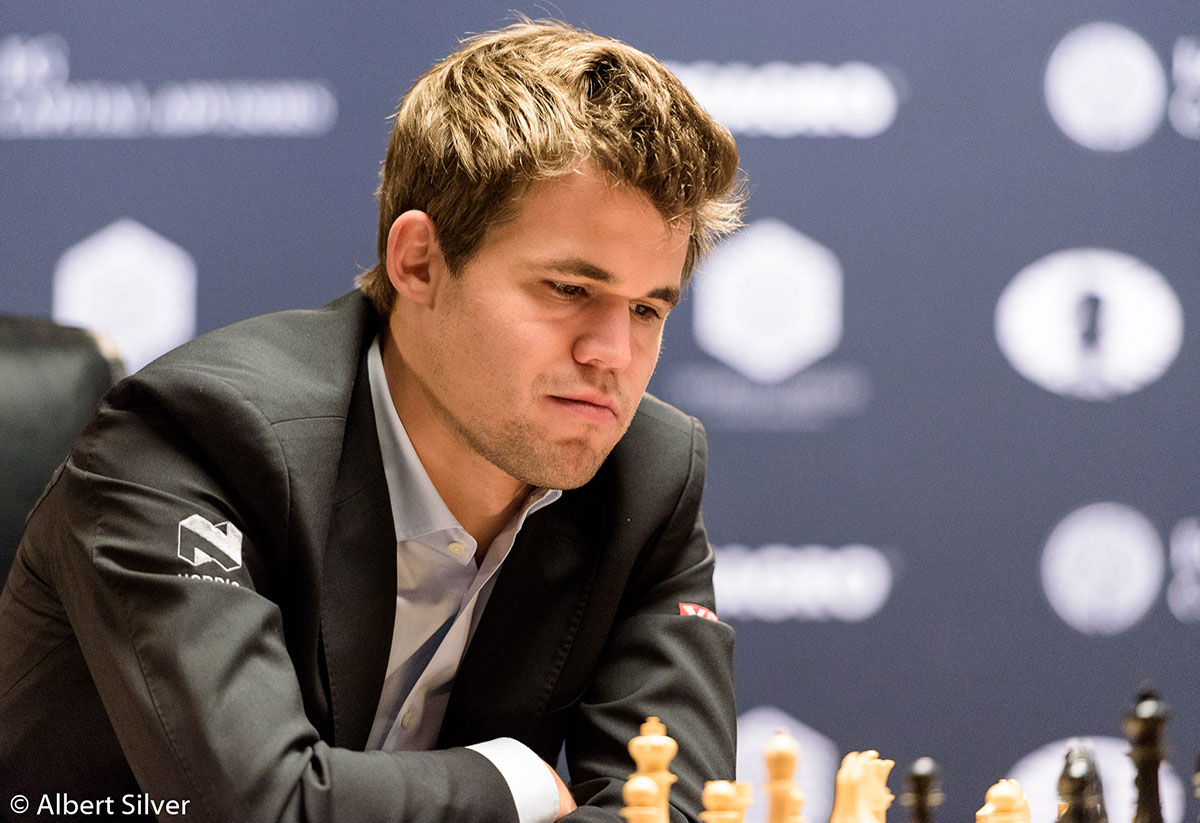
Carlsen, in New York 2016, found it tough to break through against the "Minister of Defence" | Photo: Albert Silver
2016: The classical games
This brings us back to the 2016 Carlsen-Karjakin match. Using powerful chess engines, I did a move-by-move analysis of all moves in the match. I classified a move as an “inaccuracy” if it deviated up to 0.40 from the engine’s best move at large depth; as a “mistake” for 0.40-1.00 deviation; and as a “blunder” for higher than 1.00 deviation.
In total, 625 moves were played, of which 74 moves were either Inaccuracies (I), Mistakes (M) or Blunders (B). This equates to an aggregated IMB percentage of 11.84%, distributed with 5.12% I; 4.96% M; 1.76%. No wonder it is hard to win games in a World Championship! These guys make few significant mistakes, and it is hard to get beyond the drawing margin!
Breaking down the IMBs for each player, here are the distributions in the regular games:
- Carlsen made 17 Inaccuracies (2.72%); 15 Mistakes (2.72%); and 4 Blunders (0.64%)
- Karjakin made 15 Inaccuracies (2.40%); 16 Mistakes (2.56%); 7 Blunders (1.12%).
The bottom line is that both players made few IMBs in the games with classical time control, but with Karjakin being slightly more prone to commit more significant blunders. However, as we shall see, it was not enough to separate the two players in the 12 regular games. Most games were played on a high level. In fact, of the 12 games of the regular match, played with classical time control, five games (1, 2, 6, 11, 12) were "perfect" in the sense that neither player made even a minor inaccuracy.
After two “perfect" games, Game 3 was the first one with any IMBs, and these allowed Carlsen to obtain his first decisive advantage of the match. However, just as in the present match, the World Champion let his first chance of a win slip.
You'll find analysis of all examples in the game viewer at the end of this article
Game 4 was another narrow escape for Karjakin when Carlsen misjudged a fortress, famously stating in the ensuing press conference that “I don’t believe in fortresses”. World Champions have biases too!
After these misses, neither player obtained a winning advantage until the time scramble of Game 8, where Carlsen over-reached in his attempts to finally break through. However, this backfired and handed the Challenger his first decisive advantage of the match. But just as Carlsen in Game 3, Karjakin’s first chance beyond the drawing line was missed, and when the time control was reached, the World Champion was safely back within the drawing margin. This was not one of his better days, though, as a second blunder followed, and this time Karjakin did not falter and took the lead.
Game 8 was annotated for ChessBase by none other than Fabiano Caruana!
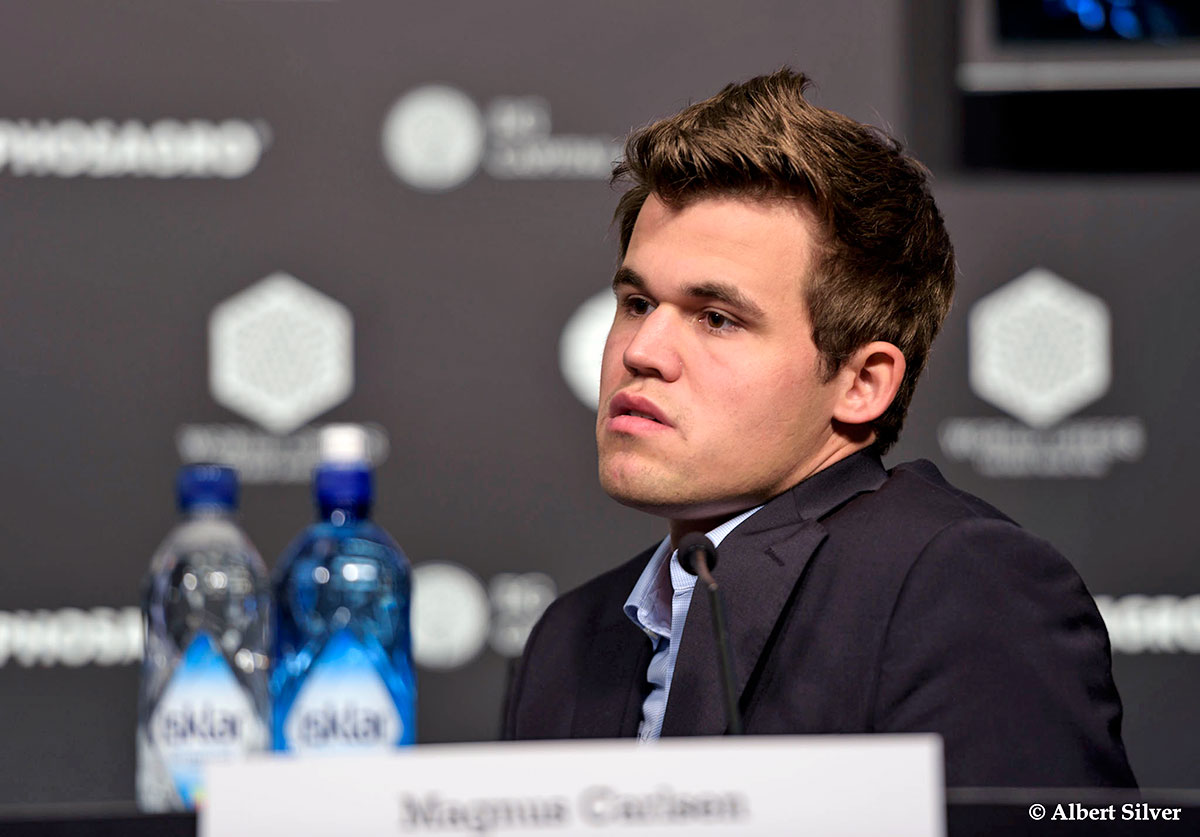
Carlsen appeared mortified in 2016 after Game 8 | Photo: Albert Silver
For the first time in his World Championship career, the World Champion was thus trailing in a match!
The question was how Carlsen would react. First, it was essential to survive Game 9 as Black, and then the World Champion would have two whites remaining to try to strike back. According to Kramnik, Game 9 was a very good game, especially considering the new psychological situation. Karjakin employed some pressure, but in fact the game never left the drawing margin, although it was close. The critical position arrived at move 38, just before the time control. At this juncture Carlsen, even though short on time, made a bold but risky decision with 38…Ne7. It may not have been the strongest move according to the engines, but it got him the result he was looking for!
Game 9 was also annotated for ChessBase by Caruana!
With three to go, Karjakin leads by one. Clearly, Game 10 would be critical. How should the World Champion approach this game?

Karjakin moves in the opening phase of game 10 in 2016 | Photo: Albert Silver
He opted for a long manoeuvring game, emphasising getting a position to his liking and where he could apply pressure for a long time — without taking excessive risk. A sensible plan, but it almost fell through when Carlsen made a simple miscalculation already on move 19, giving Karjakin a chance to force a draw.
It must have been anxious moments for the World Champion, but the Challenger missed the chance and instead accepted a passive defence in a solid but slightly worse endgame. This type of position is where Carlsen is at his best, and from here he went to work to make something of his slight advantage. Recall, though, that it would take more mistakes by Karjakin to transform the game into a win, but even the best defenders have difficulty sustaining Carlsen’s relentless pressure and the continuous problems he creates. After 55 moves of tenacious defence, Karjakin finally cracked with 56…Rhh7? and committed the losing blunder that Carlsen needed.
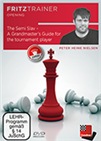 The Semi-Slav (1.d4 d5 2.c4 c6 3.Nf3 Nf6 4.Nc3 e6) can arise via various move orders, has decided World Championships, and is one of Black's most fascinating replies to 1 d4. Magnus Carlsen's second, Grandmaster Peter Heine Nielsen explains in detail what this opening is all about.
The Semi-Slav (1.d4 d5 2.c4 c6 3.Nf3 Nf6 4.Nc3 e6) can arise via various move orders, has decided World Championships, and is one of Black's most fascinating replies to 1 d4. Magnus Carlsen's second, Grandmaster Peter Heine Nielsen explains in detail what this opening is all about.
So with two draws in the final games. The match went into a rapid playoff. Carlsen appeared to be fine with that, as he went for a quick draw in the 12th game, even as White. As Carlsen’s coach, Peter Heine Nielsen, pointed out, is was a strategic and logical decision. If you consider yourself the better player — and who would argue against that in this case — it made sense to go for four games rather than the uncertainties of just one.
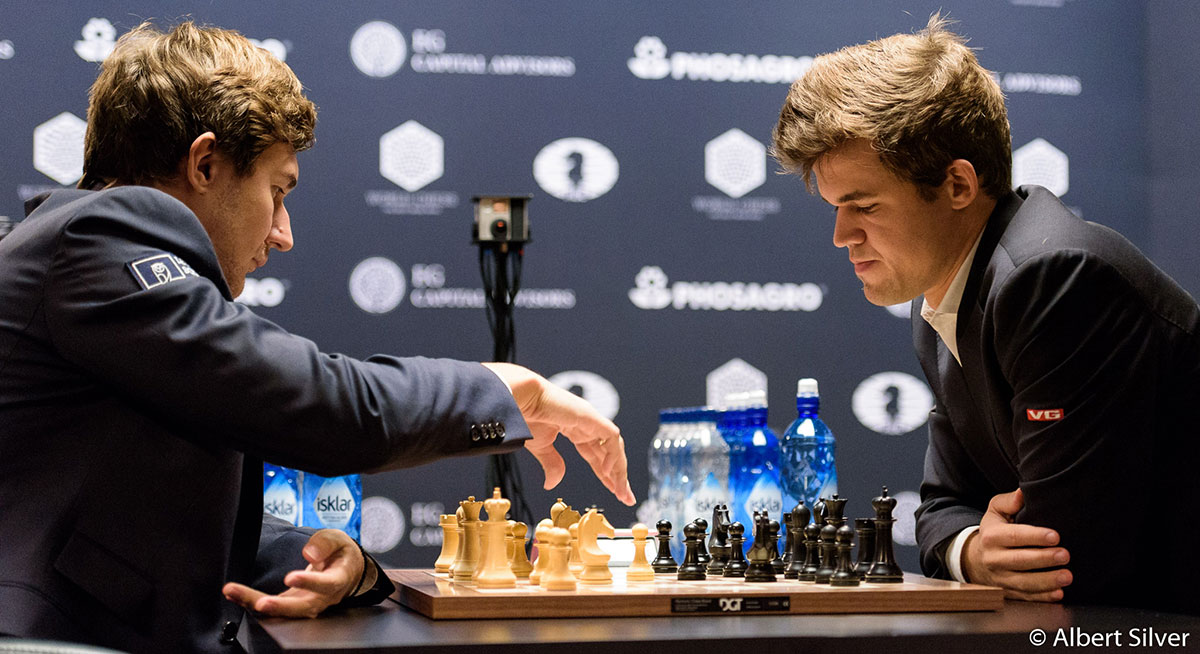
Karjakin and Carlsen during the 2016 playoff | Photo: Albert Silver
The Rapid Playoff
It turned out to be the right decision. Carlsen dominated the playoff and deservedly won by 3-1, even after missing several wins in Game 2. Not surprisingly, the error rate was much higher in the Playoff. The pressure and the clock take its toll. Here are the IMB stats from the Playoff: 209 total moves played and an IMB% of 29.67% (as opposed to the 11.84%) in the Classical games.
Broken down on Inaccuracies, Mistakes and Blunders respectively, we find: 8.13% I; 17.22% M; 4.31% B. Particularly Karjakin’s accuracy deteriorated markedly. Here are the stats by player in the rapid games:
- Carlsen committed 5 Inaccuracies, 15 mistakes and 3 Blunders
- Karjakin made 12 Inaccuracies, 21 Mistakes and 6 Blunders
No doubt Carlsen’s decision to go directly for the Rapid Playoff in Game 12 was validated. Although the time control was shorter, Karjakin had not changed his safety-first strategy. When Carlsen made a minor inaccuracy in the first rapid game, Karjakin did not really try to punish it, and the game quickly ended in a timid draw. The difference in willingness to make some bold decisions was evident also in the rapid games and may eventually have led to Karjakin’s downfall in the match.
Conversely, Game 2 was a thriller, when after committing a major misjudgment early on, Karjakin displayed the same tenacity as in the regular match and managed to hang on to a draw with little time left, when Carlsen missed three clear wins in the endgame.
Despite the disappointment of not winning this game, the World Champion was ready for the third rapid game and scored a dominant win. It is interesting to compare the perspective of human Grandmasters to the cold cynical evaluations of the analysis engines. Where the human Grandmasters see a dominant performance by the World Champion, culminating in a brilliant positional pawn sacrifice, the analysis engines simply state that Karjakin could have held the position in equilibrium until just a few moves before the end. I agree with my Grandmaster colleagues here, and with Anish Giri’s apt comment in New In Chess:
“And this gorgeous position is not even objectively better for Black [according to the engines], but this is one of those moments when as an annotator you have to pull yourself together, overrule AI and just claim that Black is dominating.”
In a real game, no human would be able to hold on.
A brilliant win by Carlsen. Karjakin had one last chance, but as Black against Carlsen in a must-win situation is an unenviable task. The Challenger tried the Sicilian to create some play, but Carlsen kept the position under control and concluded the game and match with a worthy queen sacrifice to force mate.
All examples from the 2016 match
Click or tap a game in the game list to switch
The match was extensively covered in ChessBase Magazine 176
Enjoy the best moments of recent top tournaments (WCh Carlsen-Karjakin, European Club Cup and London Classic) with analysis of top players. In addition you'll get lots of training material. For example 11 new suggestions for your opening repertoire.
Carlsen vs Karjakin Caruana
So what did we learn from Carlsen-Karjakin, and what does it mean for Carlsen-Caruana? Six games have been played, all drawn. This is as it was in the 2016 match. But in contrast to that match, already in the first game, we had the equilibrium broken into a decisive advantage.
In Game 1 of the current match, Caruana barely escaped with a draw after 115 moves, but only because the World Champion let a winning position slip.
In Game 2, the Challenger was the one nursing an advantage to no avail in Game 2. The game never passed beyond the drawing margin.
Games 3, 4 and 5 never really left equality by much, but Game 6 favoured Caruana, who even had a study-like mating opportunity which he called "almost accidental", and Garry Kasparov said no human could find.

Carlsen and Caruana were almost in disbelief when informed that Caruana had a mate-in-30 available | Photo: Nikolai Dunaevsky / World Chess
So when will the drawing streak be broken? I doubt that we will see 12 draws, but the closer we get to a potential rapid playoff, the more risk the Challenger probably has to accept. Although I will not rule Caruana’s chances in a rapid playoff out, Carlsen would surely be the heavy favourite in that case. Having prior experience from a successful World Championship playoff would also be an additional asset for the World Champion. It was only in the rapid games that he finally separated himself from Karjakin in 2016.
We will have to wait and see. As a chess fan, these are exciting times!
Links
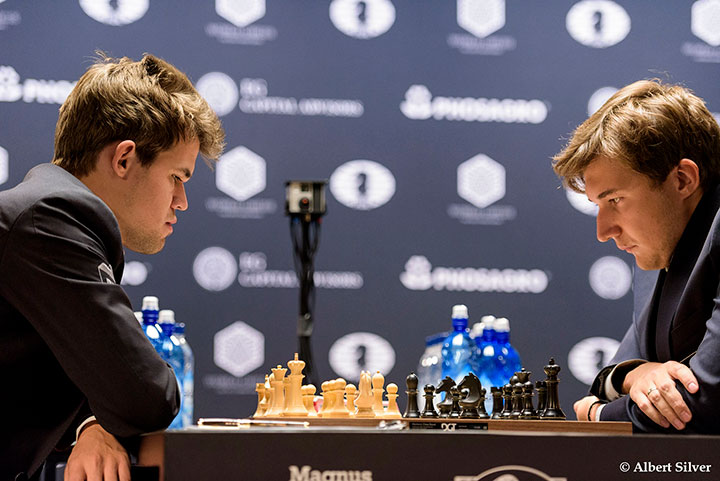

















 To understand these patterns, it is necessary to go back in time to the first World Champions in chess history, Wilhelm Steinitz and Emanuel Lasker. Steinitz revolutionised chess and is deservedly considered the father of modern positional chess. Breaking with the accepted perception of the day, which focused on attacks and beautiful combinations, it was the first World Champion's great insight that chess is an equilibrium game. To win a chess game, the equilibrium must be significantly disturbed. At the core, chess is a drawn game.
To understand these patterns, it is necessary to go back in time to the first World Champions in chess history, Wilhelm Steinitz and Emanuel Lasker. Steinitz revolutionised chess and is deservedly considered the father of modern positional chess. Breaking with the accepted perception of the day, which focused on attacks and beautiful combinations, it was the first World Champion's great insight that chess is an equilibrium game. To win a chess game, the equilibrium must be significantly disturbed. At the core, chess is a drawn game.










